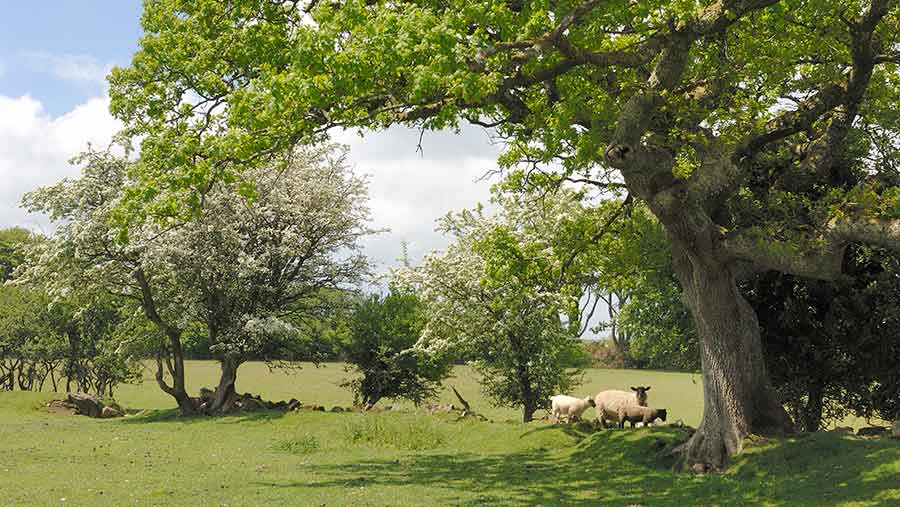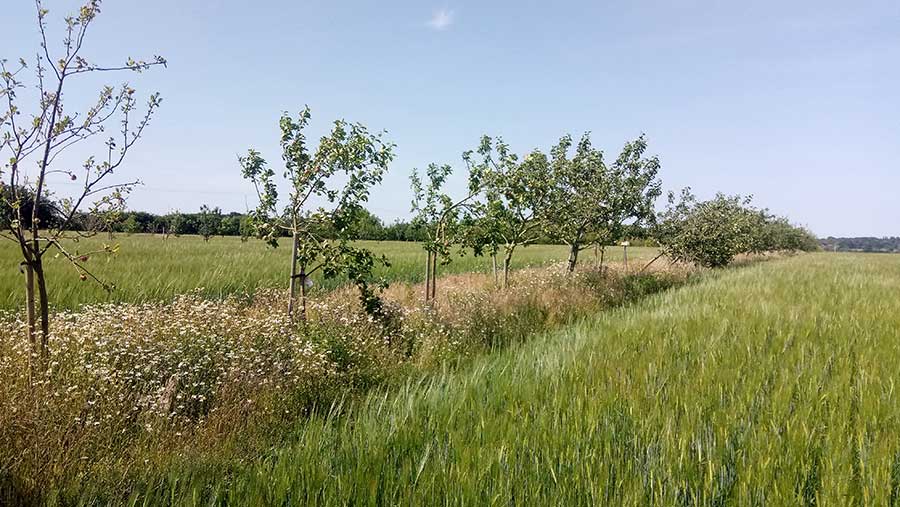Advertiser content
Agroforestry – moving towards a new norm
Trees are one of the best land management tools we have.
They protect livestock and crops from extreme weather, reduce pollution and flooding, provide new income streams, lock up carbon, and support people, wildlife and farming in adapting to the changing climate.
Your land’s natural infrastructure can bring multiple benefits to your farm business and the Woodland Trust can help you get the most from your agroforestry project.
No need for trade-offs
The deliberate integration of trees and shrubs into farming systems, also known as agroforestry, can avoid the potential trade-offs that occur in many modern farming systems between food production and delivery of public goods such as carbon sequestration.
The Trust supports farmers to access agroforestry opportunities, bringing benefits to their business as well as the wider environment.
Establishing new trees and shrubs via planting or natural regeneration with the right trees in the right place, for the right reasons, can make a real difference for business, nature and communities.
Expert advice
Many farmers tell us they lack access to funding, and the skills and knowledge to successfully design, implement and manage an agroforestry system that complements their land and business.
There is no one-size-fits-all solution to integrating trees into farming systems, so our experts will advise on the best solution for your farm, including signposting to external funding support.

Natural infrastructure for shade and shelter © WTPL Paul Glendell
Take advantage of funded schemes
Bringing more trees into farmed landscapes will boost economic and environmental resilience.
The Trust is working with farmers to make integrating trees into farms as easy and affordable as possible.
The Trees for Your Farm scheme has provided advice and funding to help farmers set up over 260 agroforestry systems in the last decade.
They are benefiting from the increased shade and shelter on their farms for livestock, improved soil and water management and much more.
Advisers can help you create a bespoke agroforestry plan for your farm, from in-field trees for shade shelter, fruit and timber production, to browsing hedges and shelterbelts.
Plant 500+ trees to improve the productivity and the environment on your farm. Up to 100% funding is available, including a site visit and tree planting assessment.
Email plant@woodlandtrust.org.uk to find out more and apply.
MOREwoods can help you create a shelterbelt, fill a field corner or even plant a small woodland.
Where 500+ trees are planted on at least half a hectare we will visit your site, help design your woodland, create a bespoke species mix, supply the agreed trees and tree protection, and cover up to 75% of costs. Apply for MOREwoods today.
MOREhedges is designed to help you plant new hedgerows to create new ecological links with woodland in the surrounding landscape.
Plant 100 – 250m of hedging in a single run to connect with at least 0.2 ha of existing or newly planted woodland (0.1ha in Scotland and Northern Ireland), or woodland via established hedgerows within 500m of the new hedge.
Check if your project is eligible and apply for MOREhedges.
Subsidised tree packs
- Need fewer trees, or faster delivery? Our subsidised tree and hedge packs are available from October to March.
- Not sure which is the right scheme for you? Contact us at plant@woodlandtrust.org.uk for advice.

Establishing a silvoarable scheme to enhance productivity and diversify into new crops © Tom Staton
Alley cropping systems have proven to give greater productivity than monocultures.
For example, an apple-and-cereal-based silvoarable system can deliver a Land Equivalent Ratio (LER) of 1-1.4 compared to monocultures. That’s a yield advantage of up to 40%
Provided by
Trees can maintain or even enhance the farm’s main agricultural output while improving the resilience of the business and simultaneously helping to protect soils, rivers, biodiversity, and climate.
Systems can be designed to avoid the potential trade-offs that occur in many modern farming systems between food production and public goods, like clean air.
How can the Woodland Trust help
Our advice and funding can help you to integrate trees into your farming system. With a bespoke plan designed for your individual business, we can offer up to 100% funding.
For more information on the funding available, please visit:
Tree planting – Woodland Trust
For more information on agroforestry, please visit:
